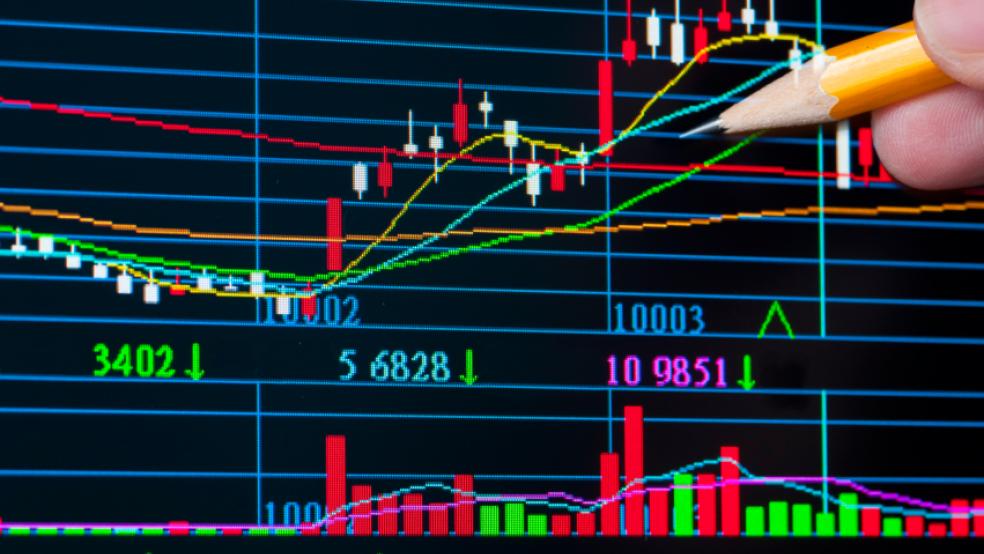U.S. companies not only are issuing more debt than ever. They're also extending it to durations never seen before.
The end result could be a good deal for the issuers but not as great for investors.
Related: U.S. Companies Are Dying Faster Than Ever
Average corporate debt maturity surged to 21.3 years in September, according to the latest data from the Securities Industry and Financial Markets Association. That's by far the longest duration since SIFMA began keeping such records in 1996. In relative terms, it was a one-month jump of 39 percent, a 45 percent gain from the full-year 2014 average and 147 percent higher than 10 years ago.
For corporations, the extension makes sense.
Most market participants expect the Federal Reserve to start raising its key interest rate in the coming months. That move will ripple through markets and ultimately push the cost of borrowing higher, though to what degree only time will tell.
Companies, then, are using these final days of a near-zero fed funds rate to lock in lots of debt, and for the longest payment period possible. Duration has been rising generally since 2005, but the ascent became more significant since the Fed cut rates to near zero amid the financial crisis in 2008.
Related: Can Consumers Keep the U.S. Economy Going?
"If you think the ship is about to sail, this is the time to get on," said Aaron Kohli, interest rates strategist at BMO Capital Markets. "A lot of people are under pressure to borrow while rates are still low."
Indeed, the level of new debt this year has been dramatic.
Investment-grade bond issuance has totaled $978.5 billion in the first nine months of 2015, a record for the first three quarters and 13 percent higher than the pace for the same period in 2014, which ended up with a record $1.13 trillion in issuance. High-yield, or junk, issuance, also has been strong at $224.3 billion, though it is nearly 9 percent off last year's total for the same period, according to SIFMA.
A slew of companies have been taking advantage, often in large proportions.
Related: Cracks in the Bond Market Show We’re Nearing the End of a Good Run
In March, Actavis scored the year's biggest deal with a $21 billion issue. In June, Reynolds American priced the biggest consumer product sector offering on record with a $9 billion issue. Globally, so-called jumbo issues, classified as $10 billion or more, have set a record, with $156 billion worth hitting the market as of August, according to Dealogic.
So who's buying all this debt? Primarily investors hungry for yield who are willing to take long-range bets against a surge in default rates and inflation.
While current conditions look solid on both fronts, 21 years is a long time to hope for stability.
"We've had seven years of zero percent interest rates. People have been pushed further and further out on the risk curve," said Michael Pento, an economist and founder of Pento Portfolio Strategies and author of "The Coming Bond Market Collapse" in 2013. "These people owning these bonds are being stuck with the relatively low and riskier interest rates for a very long time. You have to ask yourself if inflation always will be absent. I have my doubts on that."
Related: Why We Might Be Headed for a Recession in 2016
Investors generally have been willing to put money in the bond market this year. Fixed income funds in total have attracted $90 billion in inflows. Last week alone, junk funds pulled in $3.9 billion, the largest weekly inflow in eight months, according to Bank of America Merrill Lynch.
Not only are investors willing to buy more debt, they're also attaching fewer conditions. Rating service Moody's tracks covenant quality, essentially a measure of standards that bond issuers must meet, and reported Thursday that the latest reading remains near record highs, which indicates weak restrictions.
Moreover, Moody's said the ranks of the lowest level of junk bond issuers are growing, with an 8 percent quarterly increase and 27 percent growth annually, thanks in large part to weakness in oil and gas companies.
Related: What’s Really Driving the Stock Market’s Big Rebound Rally?
Still, corporate bond spreads have come up to around their historical average, providing impetus for institutional investors trying to claw out yield any way they can, even if it means an extraordinarily long-term commitment.
"Retail investors will not be interested in going out that far, but pension funds and many entities that have an actuarial table that they have to adhere to will," said Marilyn Cohen, president of Envision Capital Management. "Over the last several months, corporate spreads have widened quite significantly. Those entities like public and private pension funds, they get a little bit more bang for their buck."
It's been a rough time for pension funds and endowments.
The industry got a jolt recently when the California Public Employees Retirement System announced it was lowering its historic 7.5 percent expected rate of return in an effort to reduce volatility in its portfolio caused by reaching for risk. CalPERS, which suffered through a 2.4 percent return for its most recent fiscal year, conceivably could lower the target to 6.5 percent over time.
This article originally appeared on CNBC. Read more from CNBC:
America's best malls have this tenant in common




